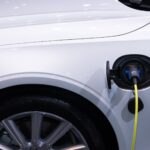Local Power. Global Connections.
Inflation Reduction Act Will Drive Investment in a Broad Range of Decentralized Energy Technologies and Projects
On August 12, 2022, the US Congress passed the Inflation Reduction Act of 2022 (IRA), a $400 billion package containing significant tax and other incentives for the decentralized energy industry. Among other things, the IRA: extends the investment tax credit for solar, geothermal, biogas, fuel cells, waste energy recovery, combined heat and power, small wind property, and microturbine and microgrid property for projects beginning construction before January 1, 2025. It also extends the production tax credit for wind, biomass, geothermal, solar, landfill gas, municipal solid waste, qualified hydropower, and marine and hydrokinetic resources for projects beginning construction before January 1, 2025. Importantly, the IRA allows the investment tax credit to be taken for stand-alone energy storage investments instead of requiring the storage component to be linked with another qualifying project. Additional bonus ITC is also provided for if certain conditions are met, such as when projects satisfy certain U.S. domestic content requirements or are located in an “energy community” or an “environmental justice” area. Tax-exempt organizations will be permitted to elect a “direct pay” option in lieu of a tax credit and taxpayers will be allowed to transfer the ITC, PTC, and certain other tax credits for cash. A new Advanced Manufacturing Production Credit will be available for companies manufacturing clean energy equipment in the U.S. such as PV cells, PV wafers, solar grade polysilicon, solar modules, wind energy components, torque tubes, structural fasteners, electrode active materials, battery cells, battery modules, and critical minerals. Additional incentives are created for electric and hydrogen-fueled vehicles, alternative fuel refueling stations, nuclear power, energy efficiency, biofuels, carbon sequestration and clean hydrogen.





